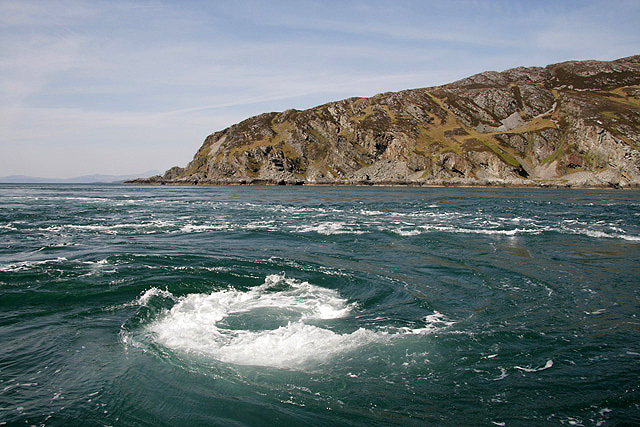The Gulf of Corryvreckan (from the Gaelic Coire Bhreacain, meaning ‘cauldron of the speckled seas’ or ‘cauldron of the plaid’), also called the Strait of Corryvreckan, is a narrow strait between the islands of Jura and Scarba, in Argyll and Bute, off the west coast of mainland Scotland.
Strong Atlantic currents and unusual underwater topography together produce a particularly intense tidal race in the Corryvreckan channel. As the flood tide enters the narrow area between the two islands it speeds up to 8.5 knots (16 km/h) and meets a variety of seabed features, including a deep hole and a rising pinnacle. These features combine to create whirlpools, standing waves and a variety of other surface effects.
The Corryvreckan is the third largest whirlpool in the world, and is on the northern side of the gulf, surrounding a pyramid-shaped basalt pinnacle that rises from depths of 70 to 29 m (230 to 95 ft) at its rounded top. Flood tides and outflow to the Firth of Lorne in the west can drive the waters of Corryvreckan to waves of more than 30 ft (9 m), and the roar of the resulting maelstrom can be heard 10 mi (16 km) away.
In Scottish mythology the hag goddess of winter, Cailleach Bheur, uses the gulf to wash her great plaid, and this ushers in the turn of the seasons from autumn to winter. As winter approaches, she uses the gulf as her washtub, and it is said the roar of the coming tempest can be heard from as far away as twenty miles (thirty kilometres), lasting for a period of three days. When she is finished with the washing, the cloth is pure white, and becomes the blanket of snow that covers the land.
The Cailleach occupying the whirlpool was described as “the fiercest of the Highland storm kelpies”


